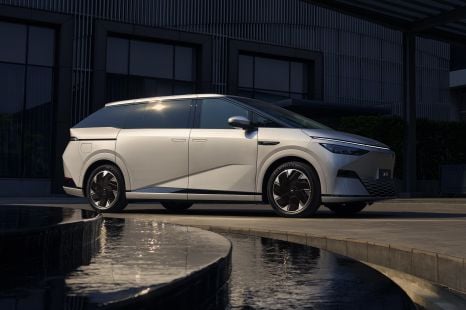

William Stopford
Will 2026 be the year of the people mover in Australia? China seems to think so
7 Hours Ago
The oft-forgotten SsangYong Korando is soldiering on in Australia for 2024. With sharp drive-away pricing it's definitely worth looking at.
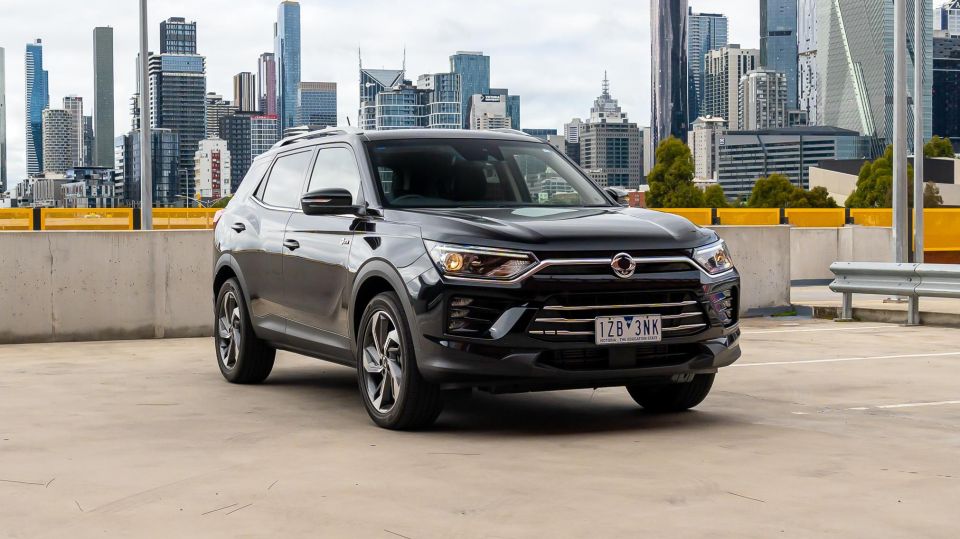
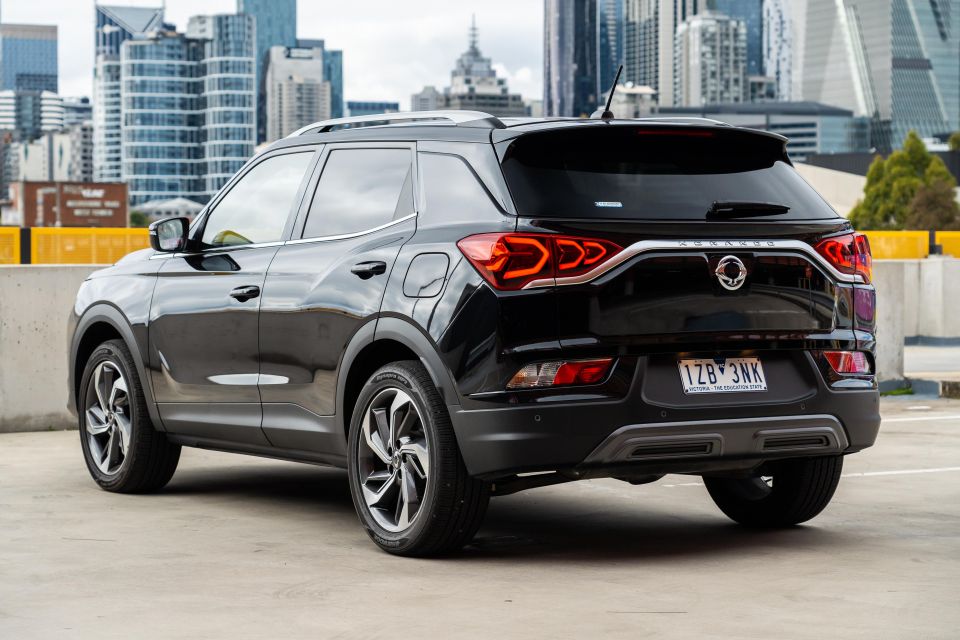

Where expert car reviews meet expert car buying – CarExpert gives you trusted advice, personalised service and real savings on your next new car.
The SsangYong Korando is one of the most forgotten and unappreciated new cars currently on sale in Australia.

This SUV is technically mid-sized according to VFACTS classifications, and has been on sale in Australia in its current fourth-generation form since 2019… but it’s still yet to make waves in its hotly contended segment.
Last year 631 examples of the Korando were sold in Australia, firmly making it SsangYong’s slowest seller.
The Korando is now starting to look a little small in the mid-sized SUV segment. When it launched it was almost identically sized to the third-generation Hyundai Tucson, but now it’s similarly sized to the Subaru Crosstrek which is technically a small SUV.
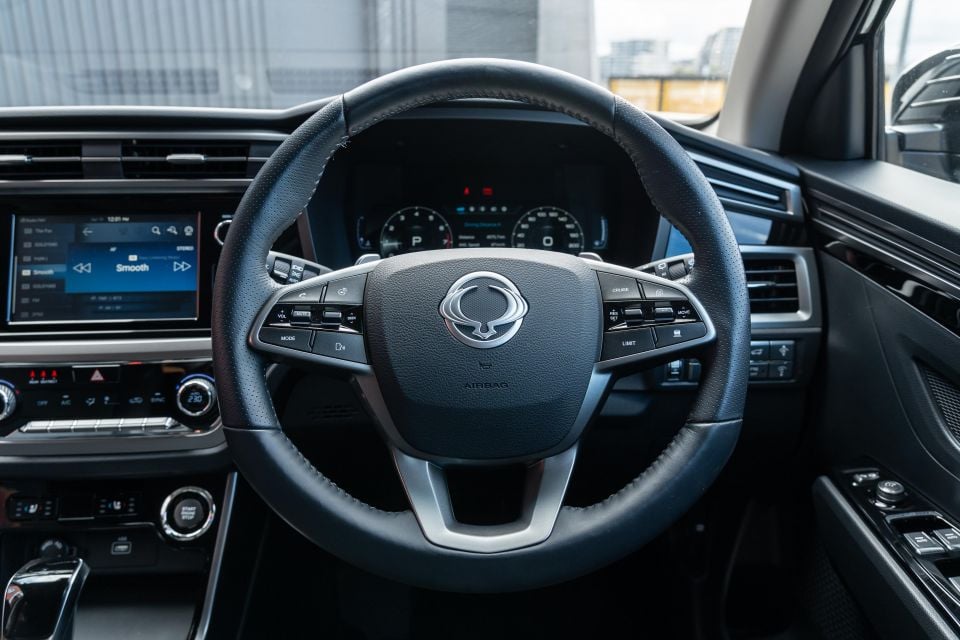
For model year 2024 (MY24) SsangYong axed the entry-level EX version of the Korando in Australia. This left the ELX and Ultimate as the only ones to soldier on. On test here is the latter.
The axing of the Korando EX follows SsangYong culling the turbo-diesel engine option, which was only offered with all-wheel drive. All Korando variants are now only offered with a turbo-petrol engine and front-wheel drive.
Is this car a hidden gem waiting to be unearthed?
There are now only two Korando variants offered in Australia. On test here is the flagship Ultimate variant.

2024 SsangYong Korando pricing:
Prices are drive-away
To see how the Korando compares with its rivals, use our comparison tool.
Buy your new car without the stress. It's fast, simple and completely free.

Great service from Travis and team, second time I have used this business would not hesitate to recommend them to anyone
Craig C.
Purchased a Ford Ranger in Sunshine Coast, QLD
CarExpert helped Craig save thousands on his Ford Ranger, now let us save you on your next new car.
Find a dealWalking up to the SsangYong Korando Ultimate, even before you unlock the car, you’re presented with some puddle lights that illuminate the ground underneath the side mirrors. This isn’t a revolutionary feature, but it’s a smart touch especially when you’re walking up to the car at nighttime.
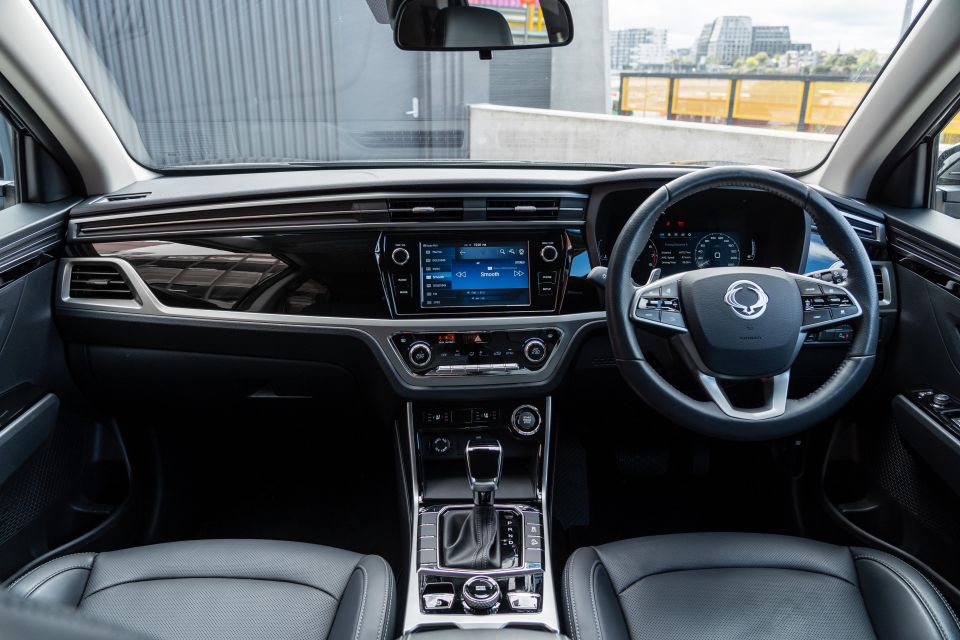
Hopping into the car you pivot in rather than stepping up or down. This is one key benefit of owning a crossover SUV as they have a raised ride height.
Once you’re in you’ll notice you sit very high in the driver’s seat. It feels like the seat is on stilts as the car itself isn’t overly tall. A high seating position is something SUV buyers look for as it gives them a confidence-inspiring driving position and clear view ahead.
As standard in the flagship Korando Ultimate is black “premium leather” upholstery which does look nice, though I’m uncertain if it’s actually leather. I’d bet on it being faux leather instead as it does smell somewhat plasticky, and gets uncomfortably sticky in hotter weather.
I was surprised to see both front seats are heated and cooled. Typically vehicles at this price only come with heating, though it is nice, especially in Australia, to have ventilated seats as well.
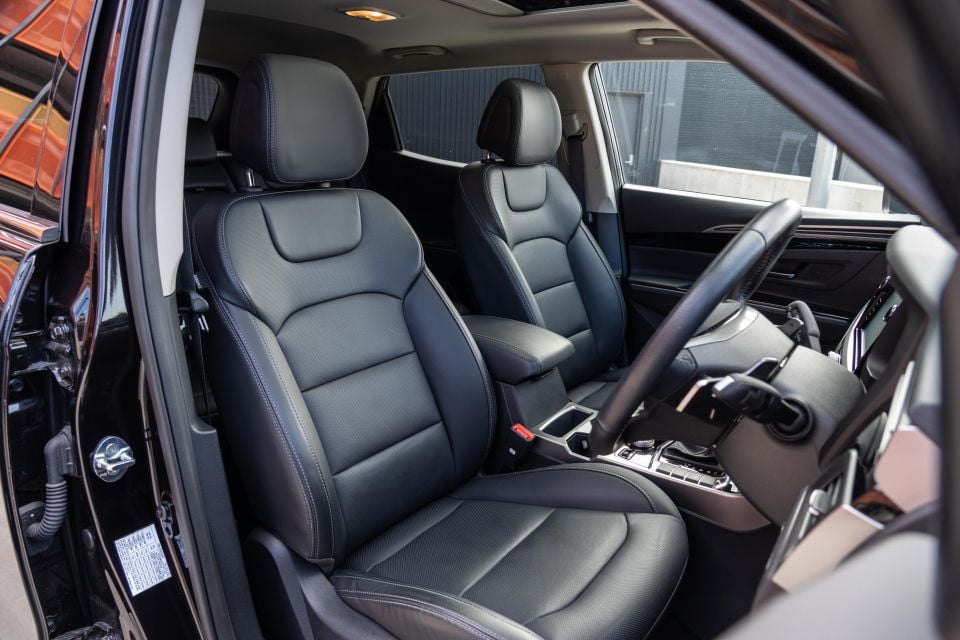
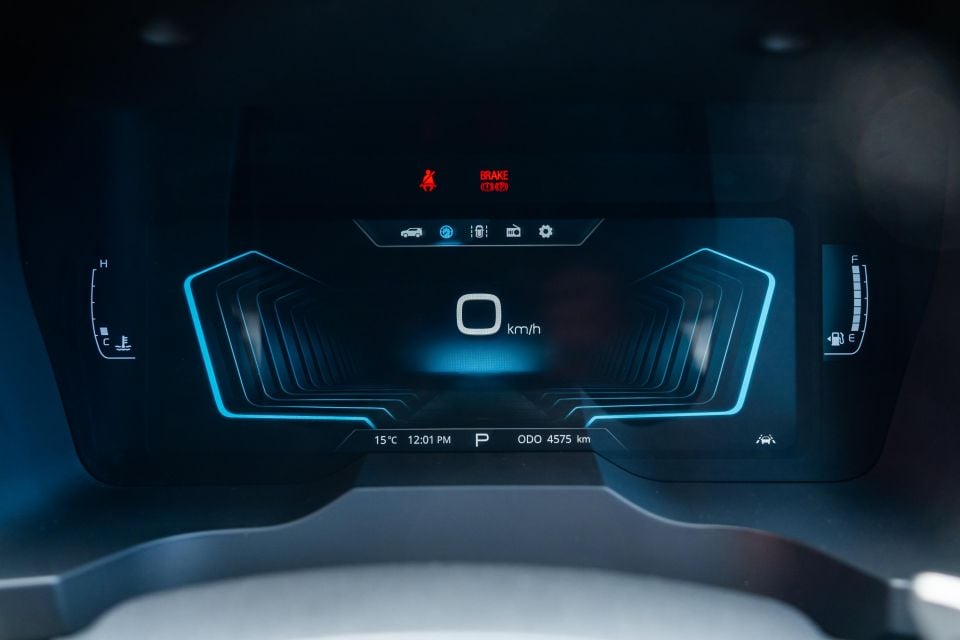
The driver’s seat comes with electric adjustability which allows you to dial in your preferred seating position. I was happy to have plenty of adjustable thigh support which is great for those with longer legs, like myself.
The steering wheel will look very familiar to you if you’ve ever driven a Musso or Rexton. It’s a nice unit to hold but in some sections it’s strangely oval-shaped which can feel a bit awkward.
Thankfully the steering wheel is heated, which was a godsend on chilly Melbourne mornings. Strangely however, the Korando would remember if you had the steering wheel heater on the last time you drove it, but not the seats…
Behind the steering wheel are familiar-looking indicator and wiper stalks. They’re classic SsangYong units, but are also shared with the Mahindra Scorpio and XUV700. For those unaware Mahindra used to own SsangYong, which is now referred to as KG Mobility.
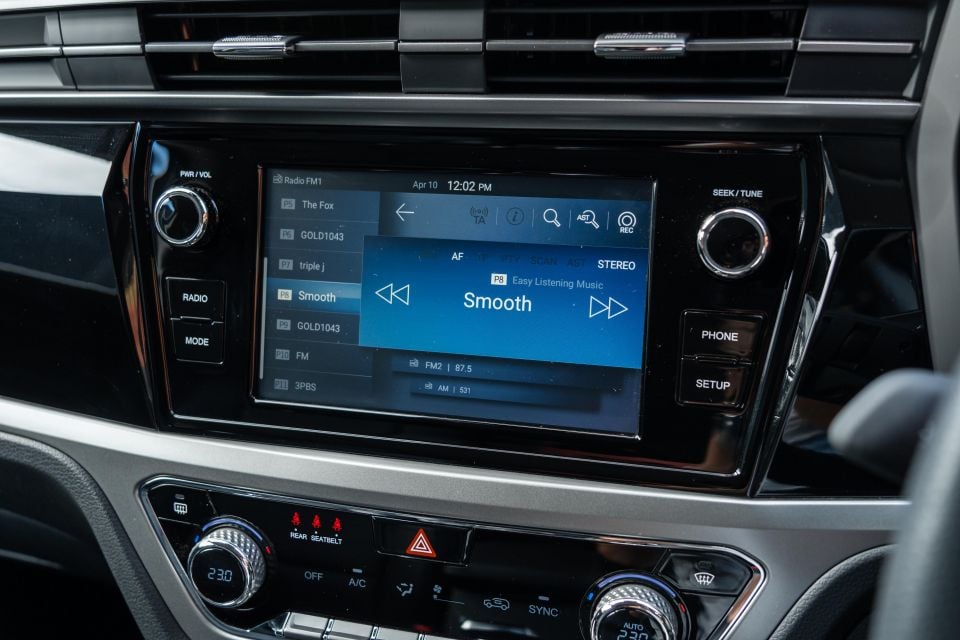
The flagship Korando Ultimate comes with a 10.25-inch digital instrument cluster that’s bright and clear. The interface has a range of cool transitions which does give me the vibe they let the intern loose in the effects department.
There are plenty of different instrument cluster views to choose from, though for the majority of my driving I went with the boring option showing a digital dials for the revs and speed. I chose this because it displayed the most information.
The 8.0-inch touchscreen infotainment system is starting to look a little small in 2024. It’s also not so prominently positioned on the dash like other rivals which put them as the centrepiece.
Disappointingly the touchscreen doesn’t appear to have the highest resolution, meaning it’s not as crisp as some of its rivals. The screen’s reaction to inputs isn’t always accurate either, causing you to press the same button a couple of times for it to properly register.
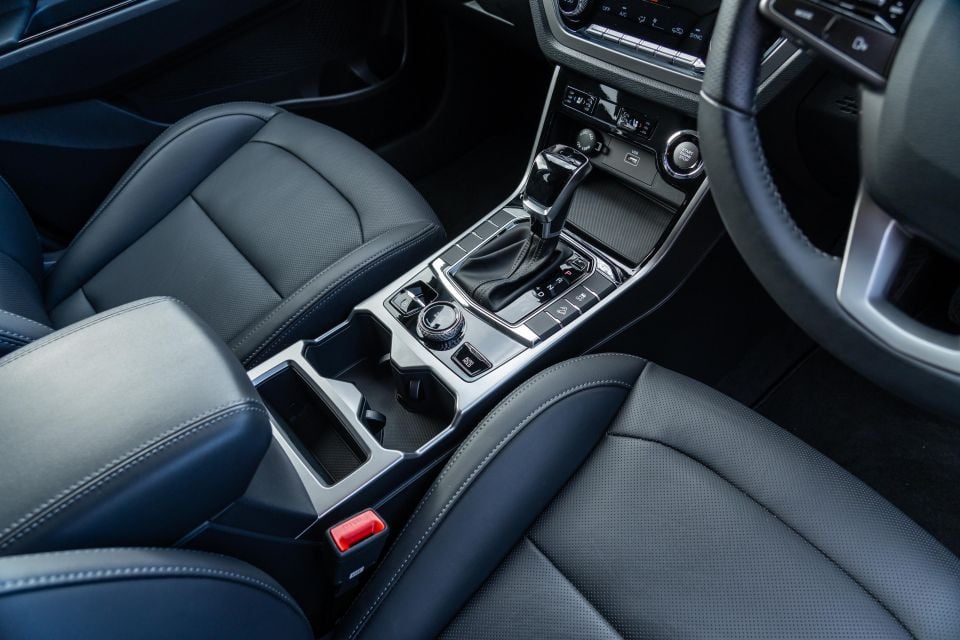
The native user interface does look a touch aftermarket compared to its rivals and there’s really not much functionality to it outside of the radio. Thankfully there are physical dials for the volume and tuner, plus Apple CarPlay and Android Auto is offered as standard, though it’s only available in wired form.
With my iPhone 15 Pro Max connected using the USB-A port I had a rock-solid connection to Apple CarPlay, which is the way it should be. One catch however is it was set up in the left-hand drive configuration, meaning the home button was on the opposite side to what I’m used to. This wasn’t world-ending and just took a second to get used to.
When I had my phone plugged in for smartphone mirroring I found there was really no perfect slot to put it. There is a section ahead of the gear selector but it didn’t fit my iPhone Pro Max properly, causing it to spill out and almost make shifting back into Park a hassle.
Under the touchscreen infotainment system the dual-zone climate control setup looks very Audi Q5-like with the row of piano key buttons. I appreciate the amount of physical buttons and dials in the age of minimalism and integrating these functions into the touchscreen.
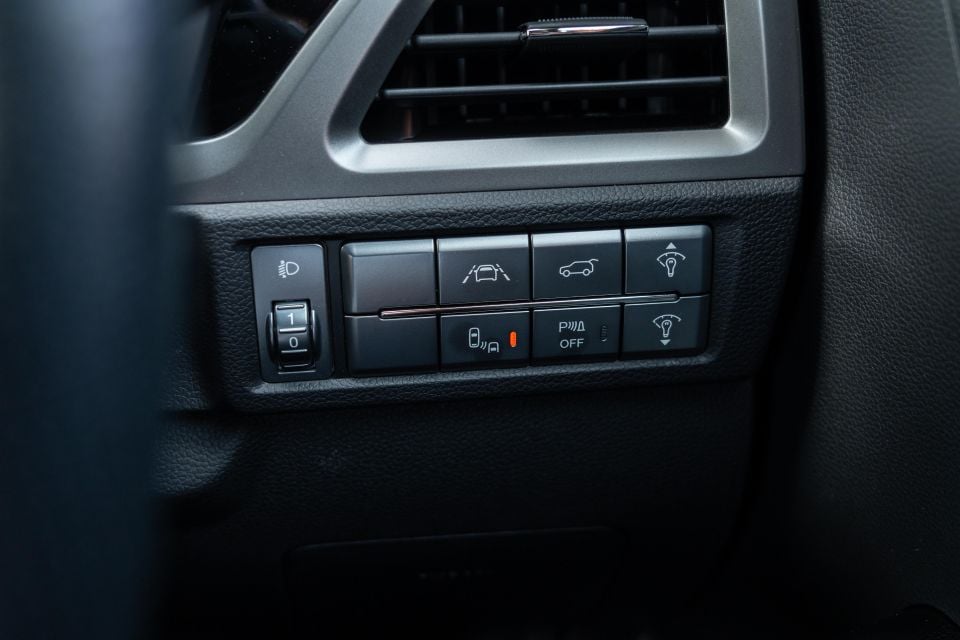
There are also plenty of other physical buttons around the cabin. A notable one is the prominent drive mode selector dial that only turns to the right for a quarter of a turn.
Looking around the cabin there are so many piano black finishes. It’s almost everywhere, including the doors. This dust-, grime- and scratch-prone surface may look flash on the showroom floor but it glossy finish doesn’t stand the test of time.
There’s also a vaguely plastic smell to everything in the cabin. This is most noticeable if you park outside on a warmer day and first hop in – after a while you get used to it.
Thankfully there are softer touches around the Korando’s cabin, especially in high-touch areas like the armrests and dashboard, though there are also plenty of harder ones. It’s similar to what the Kia Seltos offers.
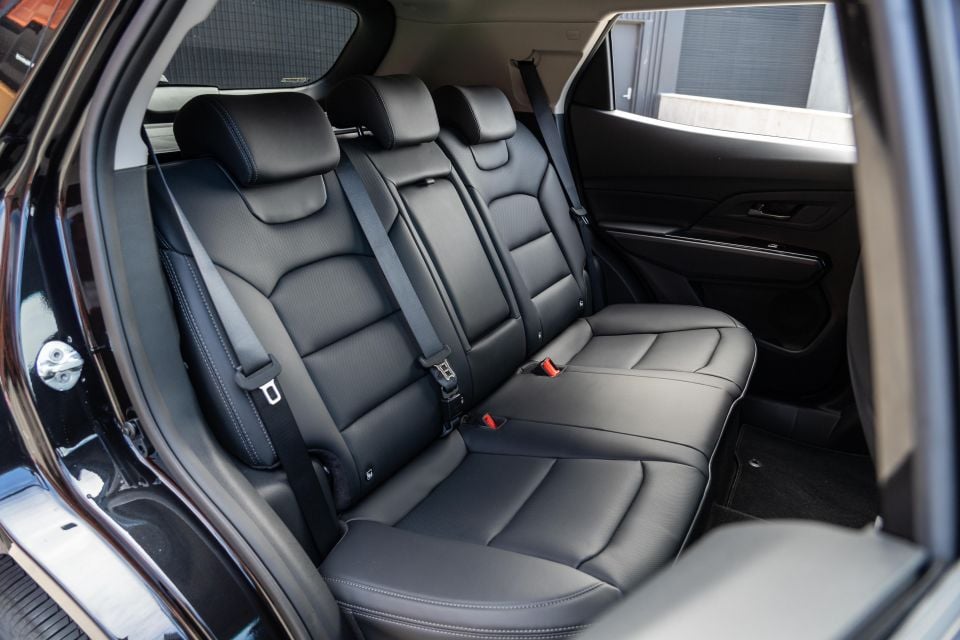
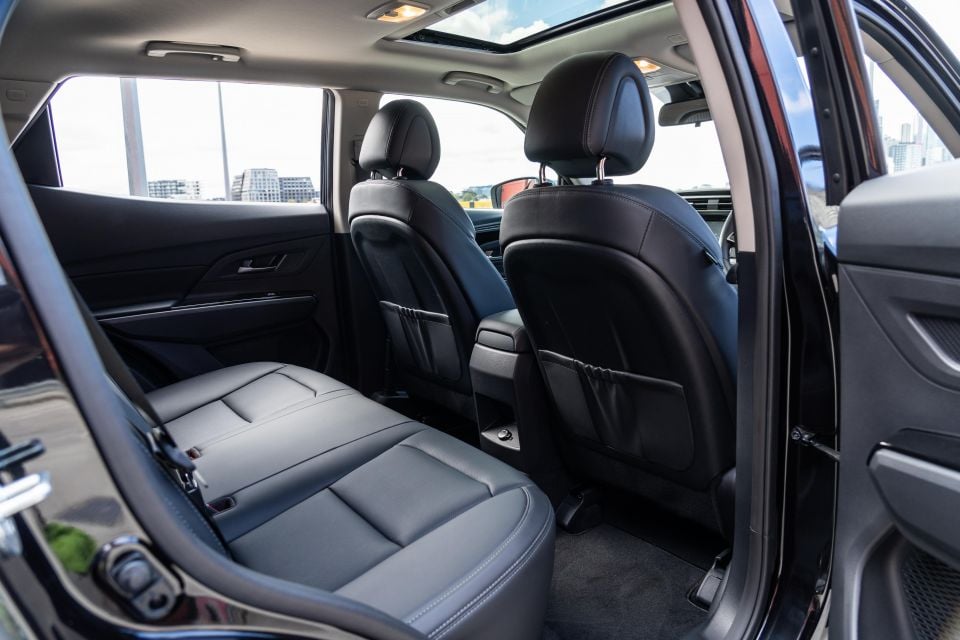
Up front there’s plenty of storage for bits and bobs, including nicely sized cupholders, a deep centre console bin, as well as one of the largest glove boxes I’ve seen in a new car. There are also dual bottle holders in each front door.
The last thing I’ll mention before discussing the second row is the Korando Ultimate comes standard with a sunroof that does help make the cabin feel lighter and airier. I appreciate the sliding cover is completely opaque, meaning if you don’t want the sun glaring in you don’t have to.
Hopping into the Korando’s second row you’ll be presented with a generous amount of space that thankfully isn’t impeded by the sunroof. There’s good leg-, head-, shoulder-, and toe space behind my driving position.
Although there is a nice amount of space in the second row, there aren’t many amenities that make you want to spend a long time back there. For example there aren’t any rear air vents or USB ports.
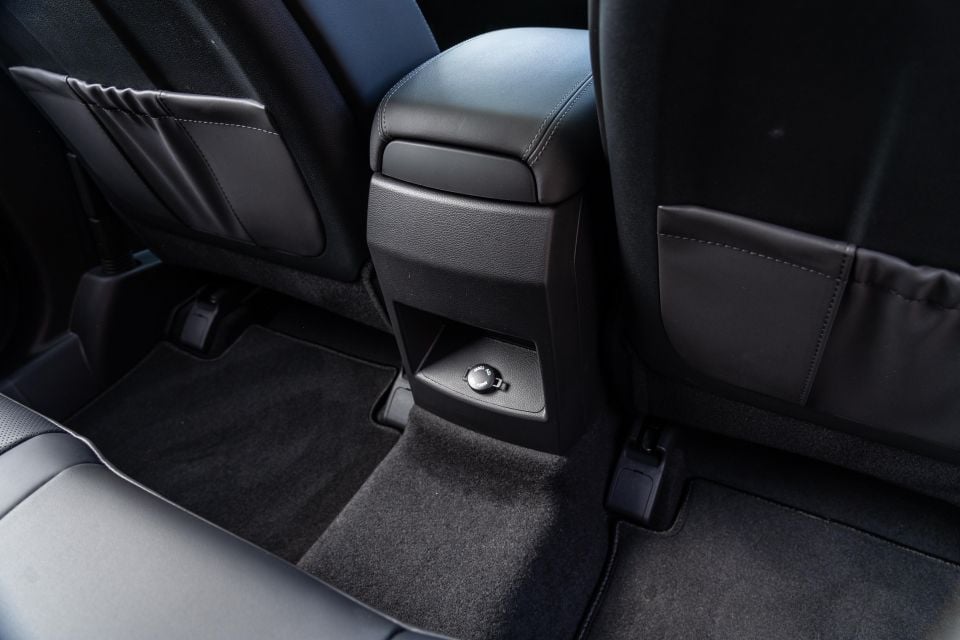
The only notable amenities in the second row include a single 12V socket and a fold-down centre armrest with cupholders.
There are also the requisite ISOFIX points on the outboard seats, plus top-tether points on all three rear seats.
At the back the Korando Ultimate comes with a power tailgate which opens briskly and quietly. Once it’s opened you may be a little disappointed with the boot space on offer.
SsangYong claims the Korando has a boot capacity figure of 407 litres with the rear seats upright, expanding to 1104 litres with them folded, but to my eye this doesn’t look quite right.
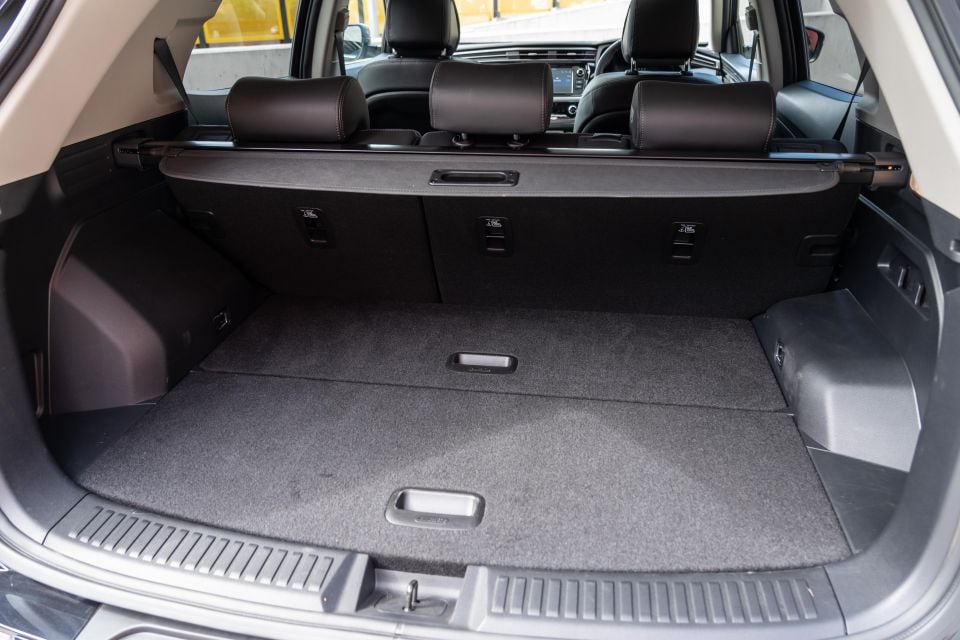
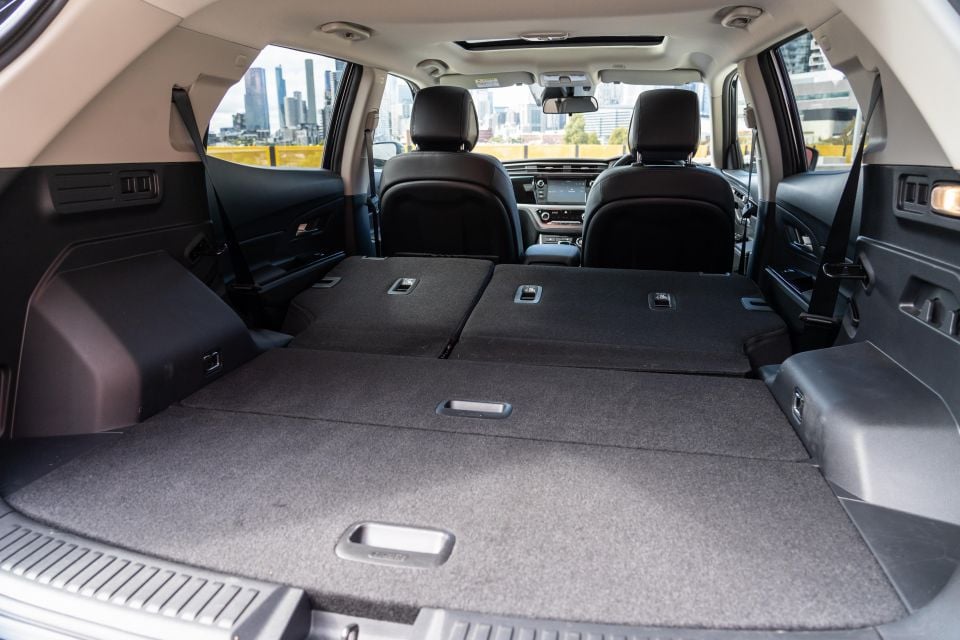
The boot looks really smooshed with a high floor due to the full-size spare wheel taking up the space underneath. It looks very similar to the Crosstrek’s boot which for reference only has 291 litres of boot space.
I am thankful SsangYong has equipped the Korando with a full-size spare wheel as it previously only came with a tyre repair kit. This is critical for people who drive in rural and regional areas away from tyre repair shops.
The entire SsangYong Korando range is now exclusively powered by a turbo-petrol powertrain with front-wheel drive. The turbo-diesel powertrain with all-wheel drive was axed in 2022.
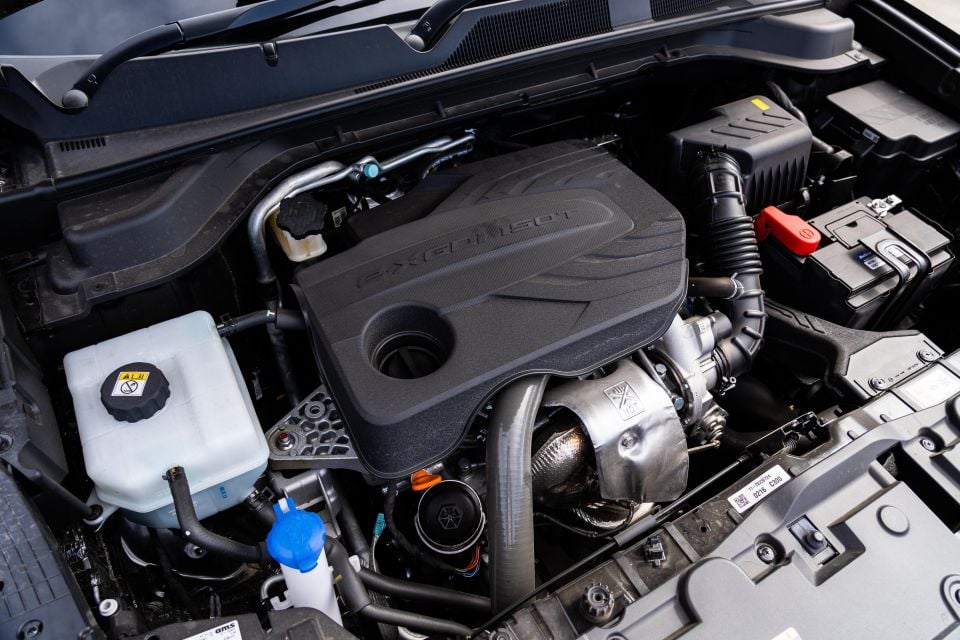
| Model | SsangYong Korando |
|---|---|
| Engine | 1.5L 4cyl turbo |
| Power | 120kW (5000rpm) |
| Engine torque | 280Nm (1500-4000rpm) |
| Transmission | 6-speed auto |
| Driven wheels | Front-wheel drive |
| Weight | 1435kg (kerb) |
| Fuel economy (claim) | 7.7L/100km |
| Fuel economy (observed) | 9.5L/100km (urban driving) 7.0L/100km (highway driving) |
| Fuel tank size | 47 litres |
| Fuel requirement | 95 RON |
To see how the Korando compares with its rivals, use our comparison tool.
Starting up the SsangYong Korando there’s a really smooth petrol ignition sound. It has a quiet idle, even when the engine is cold unlike some rival brands’ engines.
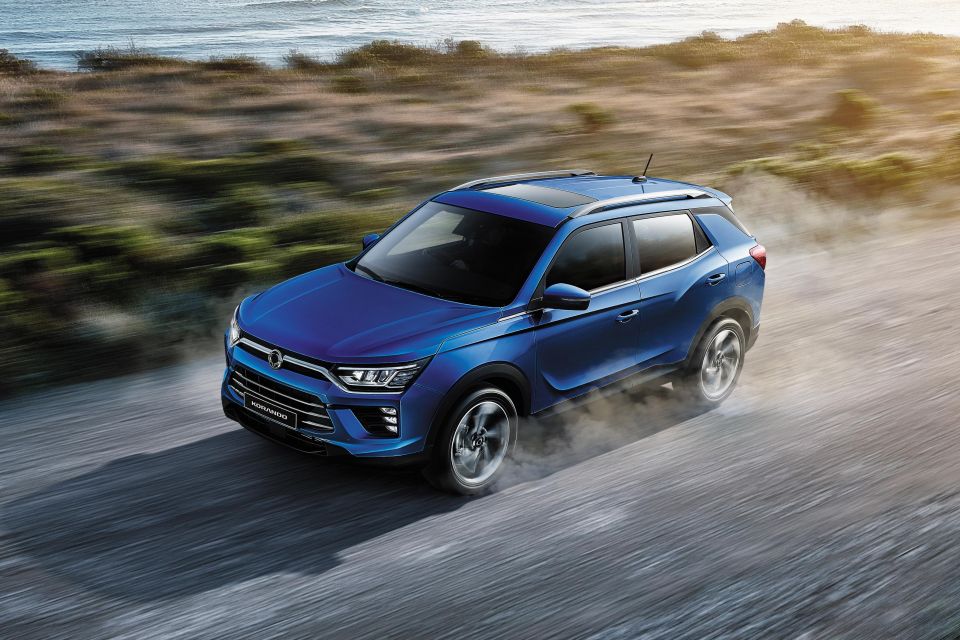
Where expert car reviews meet expert car buying – CarExpert gives you trusted advice, personalised service and real savings on your next new car.
Setting off it’s capable of brisk acceleration in everyday driving. The way the 1.5-litre turbocharged four-cylinder petrol engine delivers its power is very effortless, and it doesn’t require as much work as a naturally aspirated engine.
You’re able to lean on the 280Nm of torque at low speeds as it comes on tap from 1500rpm. This means there aren’t as many gear changes needed to maintain speed or accelerate.
A six-speed automatic transmission is the only option offered in Australia and it’s silky smooth and dependable. All the shift points are very predictable, which makes the driving experience very relaxing.
The Korando does come with a sport mode which stiffens up the steering and causes the revs to flare higher when accelerating. The engine doesn’t have the most appealing note, but it’s still pretty peppy to fang around in the city.
I much prefer how the car operates in its normal driving mode however, and stuck with that for pretty much all of my testing.
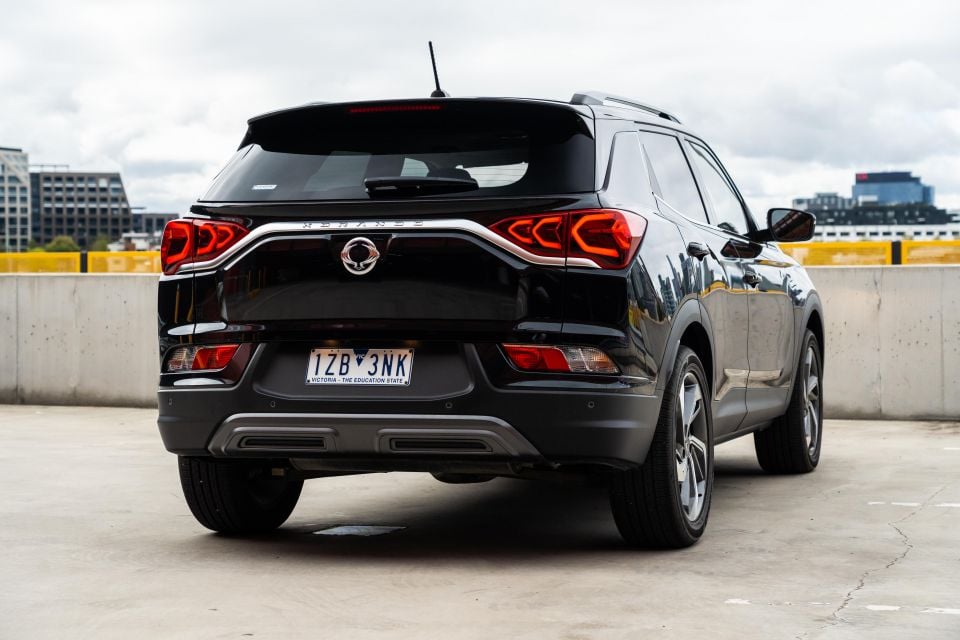
One catch about driving the Korando in the city is it doesn’t have an engine idle stop-start function like some of its rivals. This means the fuel consumption balloons out when you’re stuck in traffic.
A surprise for me was how comfortable and compliant the Korando’s suspension tune is, even with the larger 19-inch alloy wheels fitted to our Ultimate tester.
It does err on the firmer side, but is thankfully nowhere near as floaty as its Chinese rivals. The Korean-built Korando is far from being sporty or dynamic however, as like a number of crossovers which have a high centre of gravity it gets the leans in the corners.
In the normal driving mode the steering is on the lighter side, but there’s still a bit of feedback letting you know what’s happening with the wheels. It’s an easy car to navigate in tight city laneways, which makes parking it a breeze.
As standard the Korando comes with front and rear parking sensors, as well as a reversing camera which has pretty poor quality. It would be nice to have a surround-view camera but at the Ultimate’s price point I can’t complain.
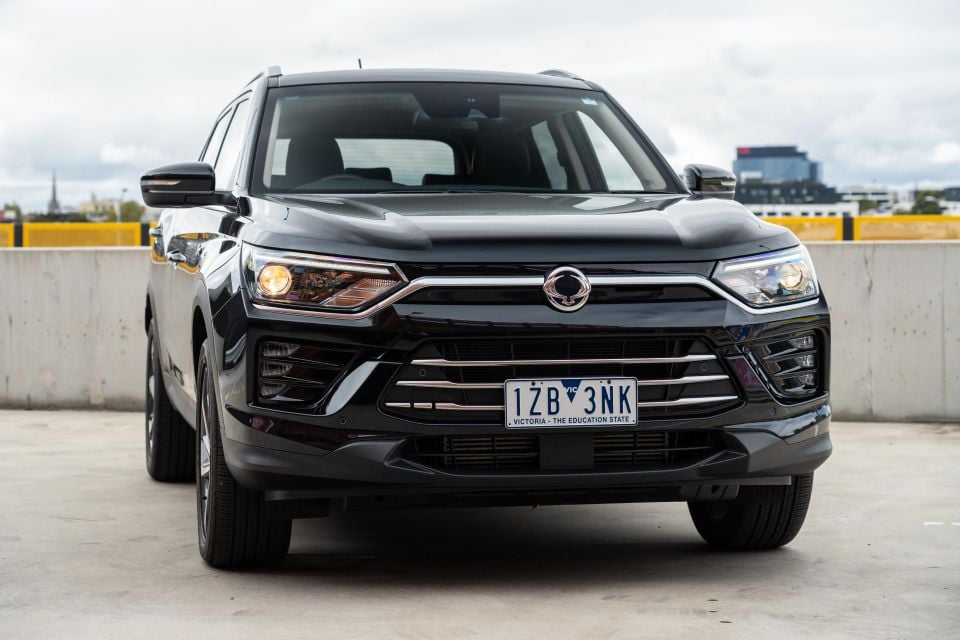
It’s really easy to pick up speed in the Korando once you get out on the open road. Thanks to the turbo-petrol engine the revs are kept down really low, and there’s plenty of oomph if you need to overtake.
On the highway and freeway the SUV becomes an effortless tourer, though the engine does sit at a buzzy 2000rpm at 100km/h. I wish there was just one more gear so the revs could drop a tad lower given there’s enough torque on tap.
The fuel consumption does settle down when you’re travelling at a constant higher speed, though if you’re constantly accelerating and decelerating around town prepare to be filling up with 95 RON premium petrol pretty often. Based on my math I’d be lucky to get 500km on a tank.
The solid suspension performance continues at higher speeds. It’s able to iron out pretty much every imperfection and never feels overwhelmed with continuous bumps.
On the safety front the adaptive cruise control system is great. Unlike some systems it doesn’t get overwhelmed and slam on the brakes when a car merges in ahead of you. It will instead modulate the distance between you and the car ahead really naturally.
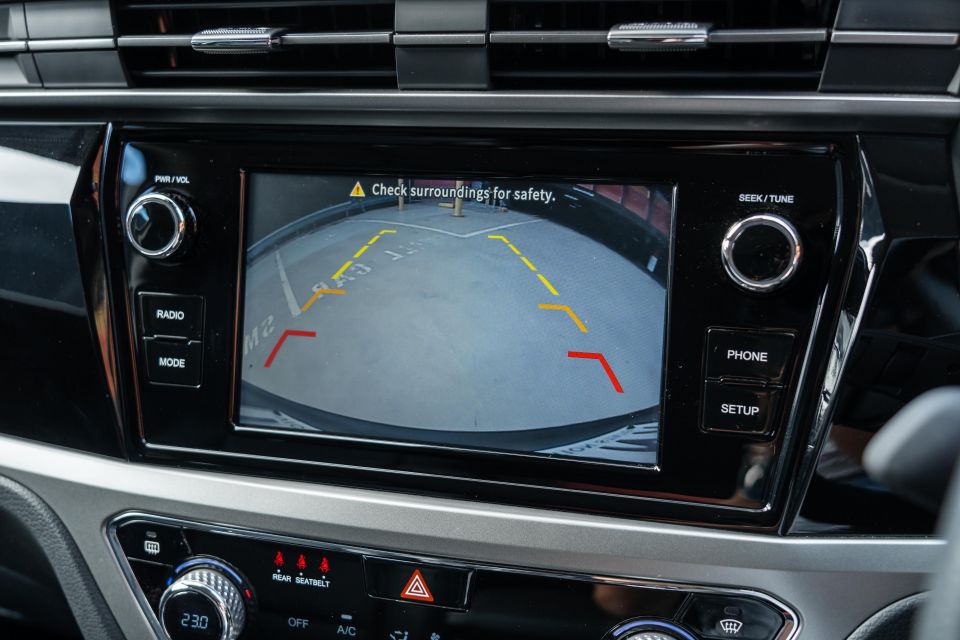
It’s not perfect however, as sometimes on the closest distance setting the Korando will brake a little hard when coming to a complete stop. It’s also a little dopey when taking off again.
The Korando Ultimate comes standard with Intelligent Cruise Control which is SsangYong-speak for lane centring with the adaptive cruise control. It operates really well on well-marked roads, though is quick to cut out when it can no longer detect the line markings.
When the lane centring function disengages it makes an annoying sound that similar to a hospital monitor of some sort. It was enough to drive my partner batty from the passenger seat on a short drive.
The last thing I’ll mention in this section is the entire SsangYong Korando range, even the flagship Ultimate variant, still makes do with halogen headlights.
I understand there is a precedent for similarly sized vehicles to still have halogen headlights (I’m looking at you Kia Seltos), but in 2024 this isn’t really good enough.
There are now only two Korando variants on sale in Australia. On test here is the flagship Ultimate.
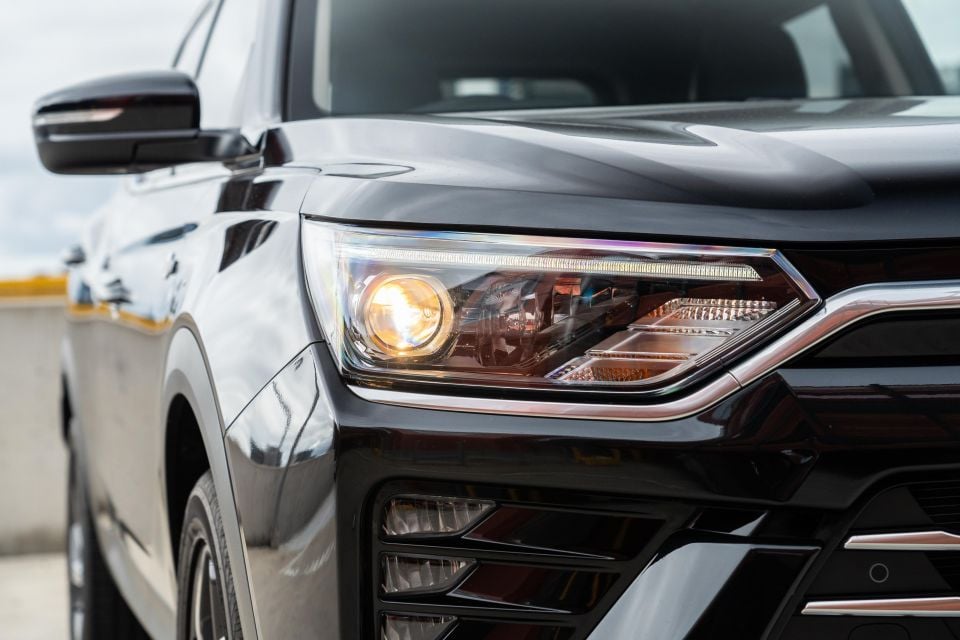

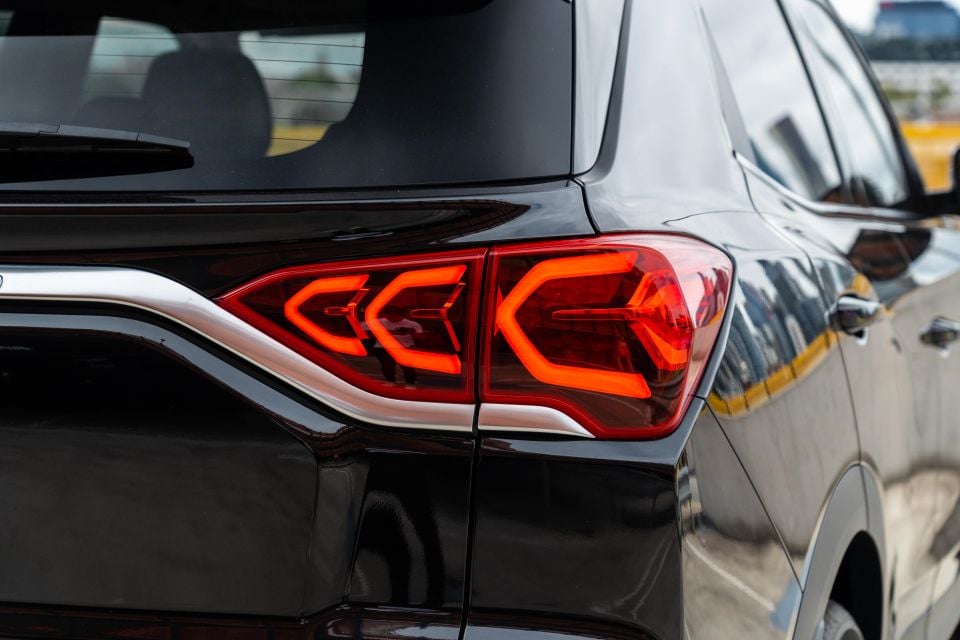

2024 SsangYong Korando ELX highlights:
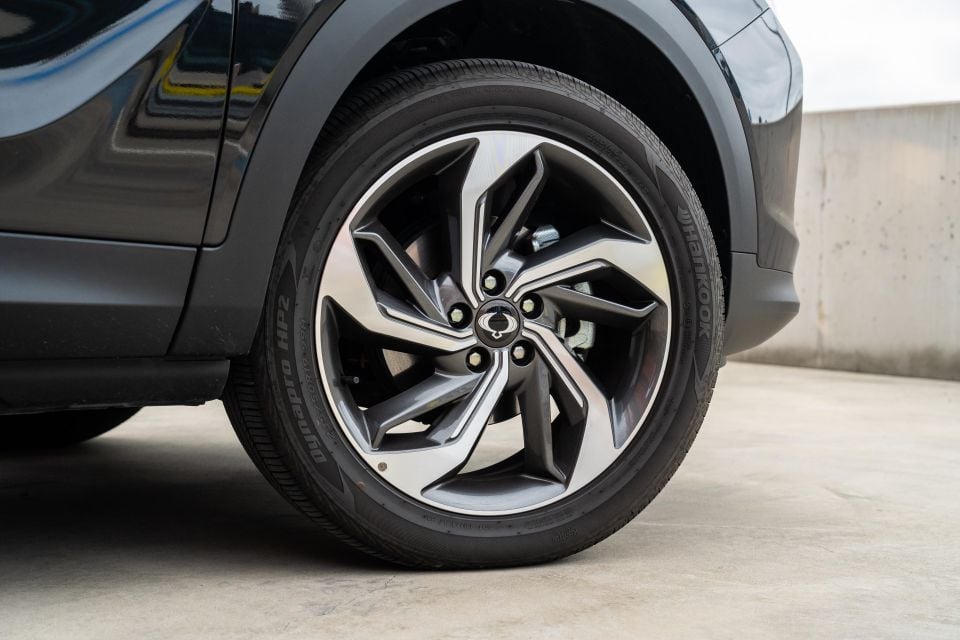

Ultimate adds:
The SsangYong Korando received a five-star ANCAP safety rating based on testing conducted by Euro NCAP in 2019.
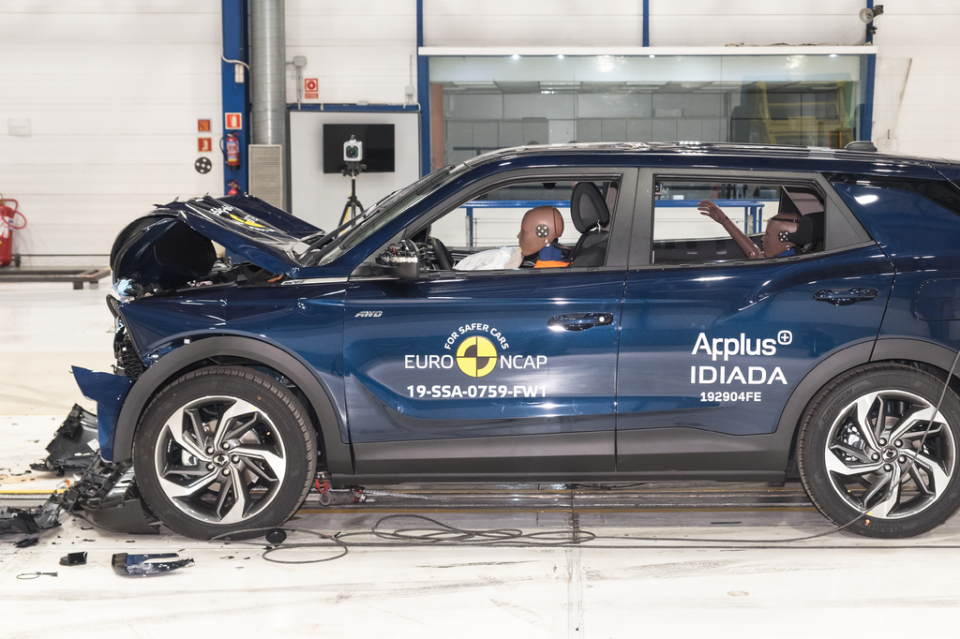
It scores 88 per cent for adult occupant protection, 86 per cent for child occupant protection, 68 per cent for vulnerable road user protection, and 72 per cent for safety assist.
The entire range comes with the following safety equipment:
Ultimate adds:
The SsangYong Korando is covered by a seven-year, unlimited-kilometre warranty with seven years of roadside assistance.
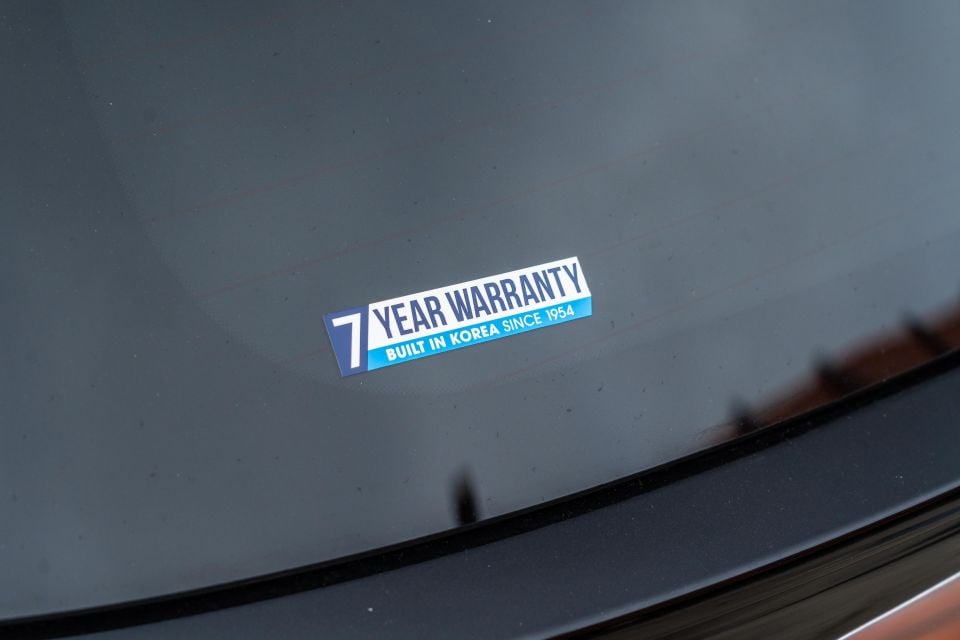
Logbook servicing is required every 12 months or 15,000km – whichever comes first. The first seven services are capped at $295 each.
Throughout my testing I realised the Korando’s average fuel economy gauge resets itself every time you drive the car. This means I don’t have a proper average figure for my week of testing.
What I did instead was note down my average fuel economy for every single trip I did. For reference, the best figure I saw was 7.0L/100km on a trip that was predominantly on the highway, and the worst I saw was over 11L/100km in some properly heavy traffic travelling home after work.
The SsangYong Korando deserves to sell better in Australia than it does.
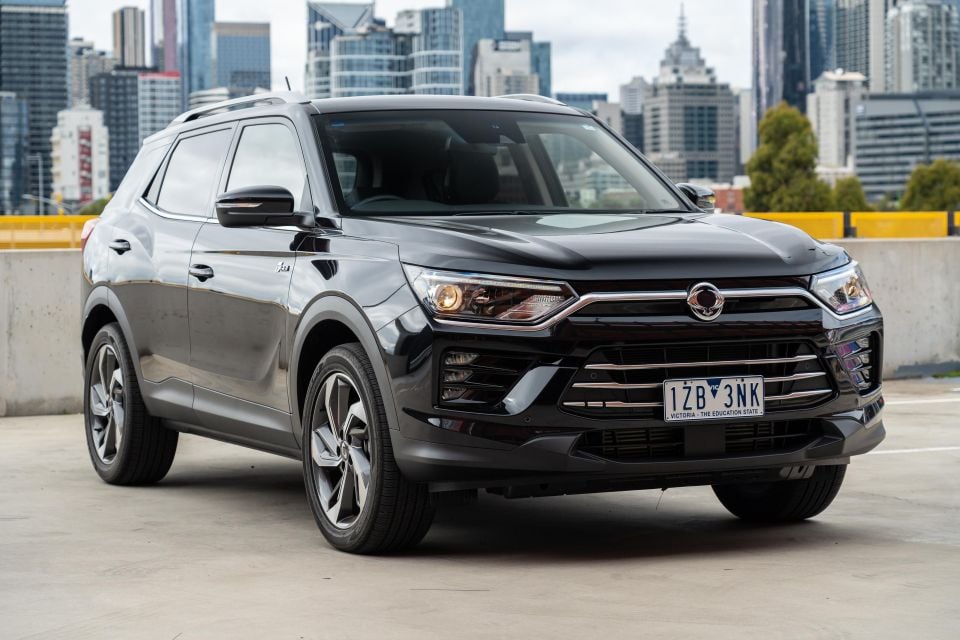
This small-to-medium-sized SUV is keenly priced and likely right-sized for a lot of people.
There is plenty of standard equipment, plus the peppy little turbo-petrol engine makes commuting a breeze. SsangYong does also offer a long warranty with affordable capped-price servicing for extra peace of mind.
There are some sticking points however, including the excessive use of plastics and piano black inside, as well as the halogen headlights.
Another gripe is the Korando’s thirst for premium petrol. I wish the car came with a stop-start system that would likely bring down the average fuel economy when you’re sitting in traffic.
If you’re looking at getting an SUV I think you’d be silly to not consider the Korando. Take one for a test drive and you may be pleasantly surprised.
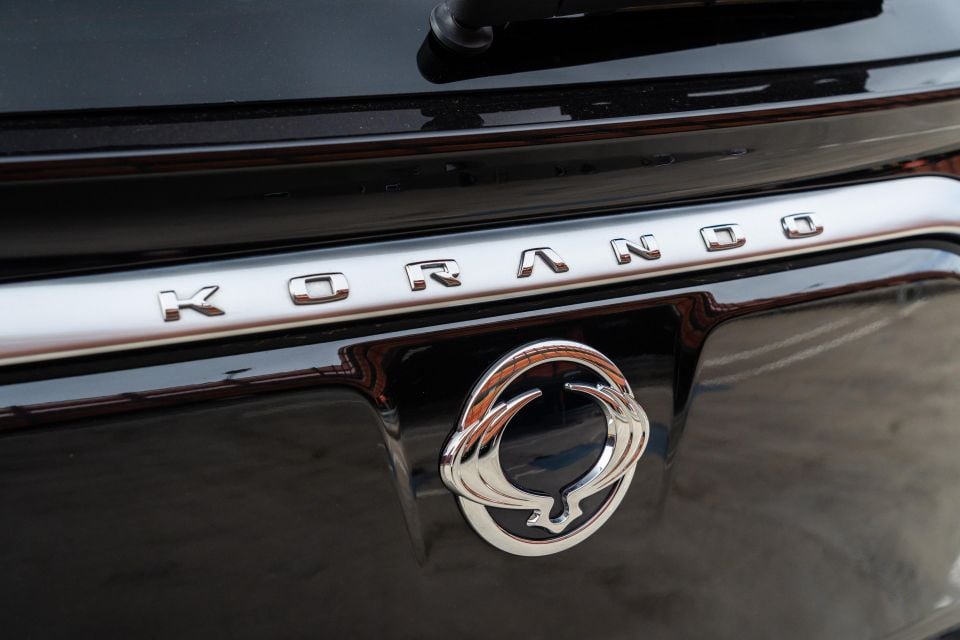
Click the images for the full gallery
MORE: Buy a SsangYong Korando MORE: Everything SsangYong Korando
Where expert car reviews meet expert car buying – CarExpert gives you trusted advice, personalised service and real savings on your next new car.
Jack Quick is an automotive journalist based in Melbourne. Jack studied journalism and photography at Deakin University in Burwood, and previously represented the university in dance nationally. In his spare time, he loves to pump Charli XCX and play a bit of Grand Theft Auto. He’s also the proud owner of a blue, manual 2020 Suzuki Jimny.


William Stopford
7 Hours Ago
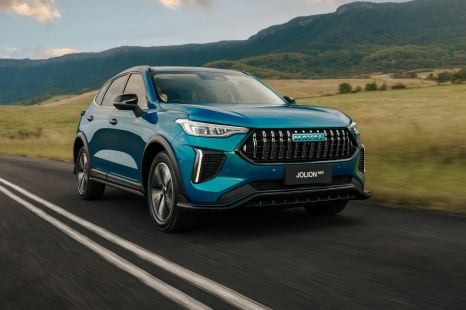

Max Davies
7 Hours Ago
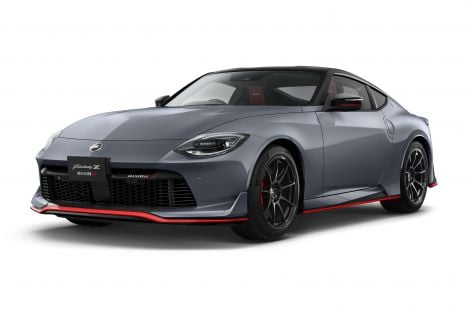

Derek Fung
8 Hours Ago
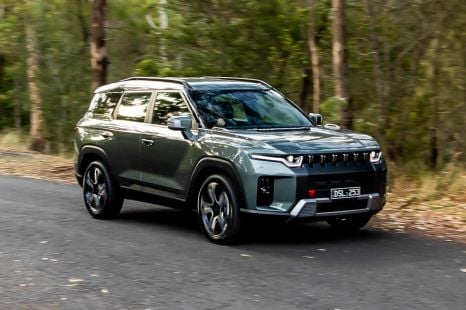

Matt Campbell
15 Hours Ago
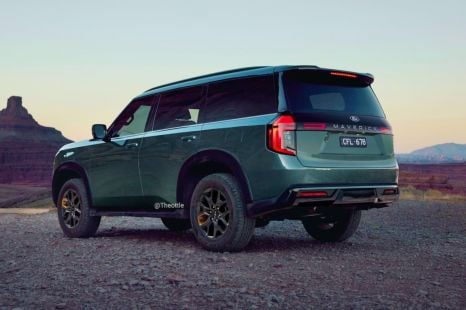

Ben Zachariah
1 Day Ago
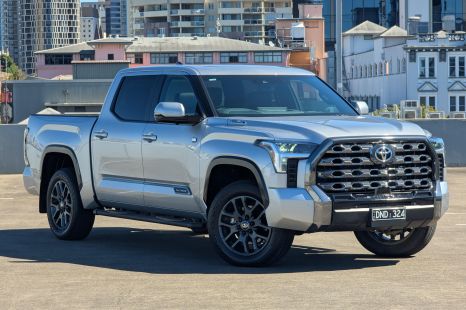

Damion Smy
1 Day Ago